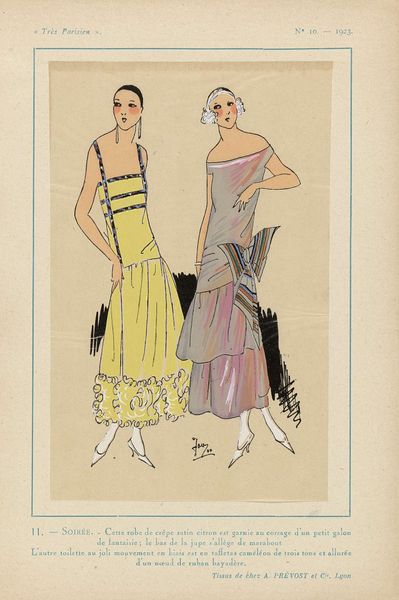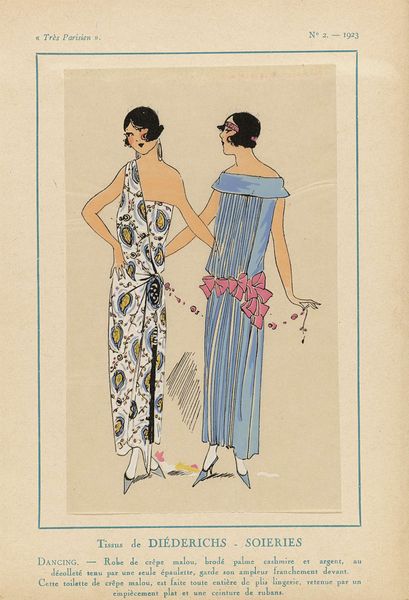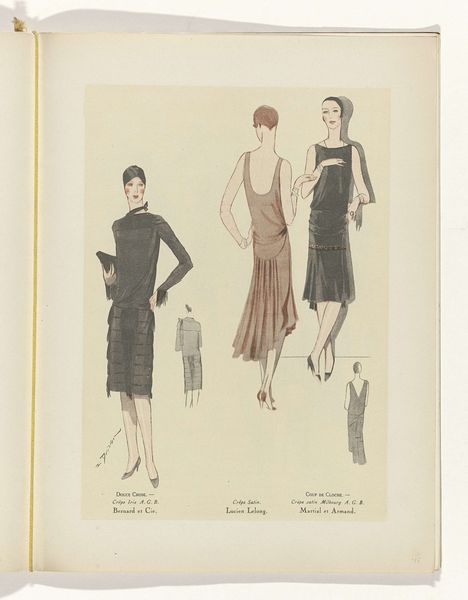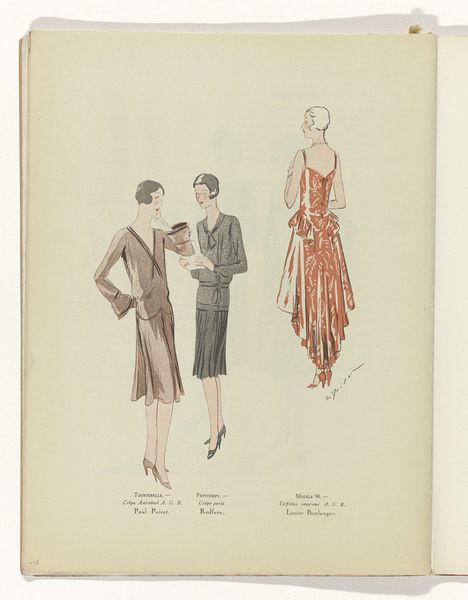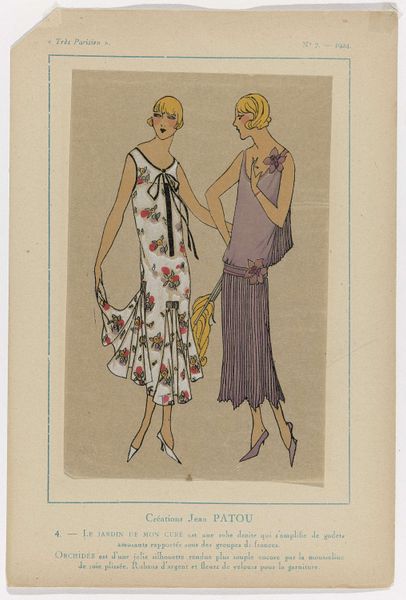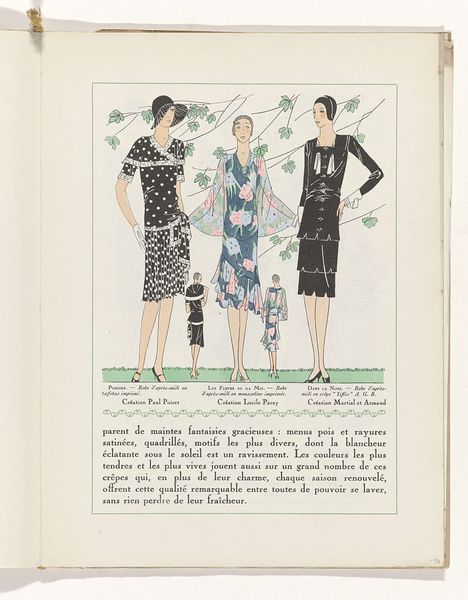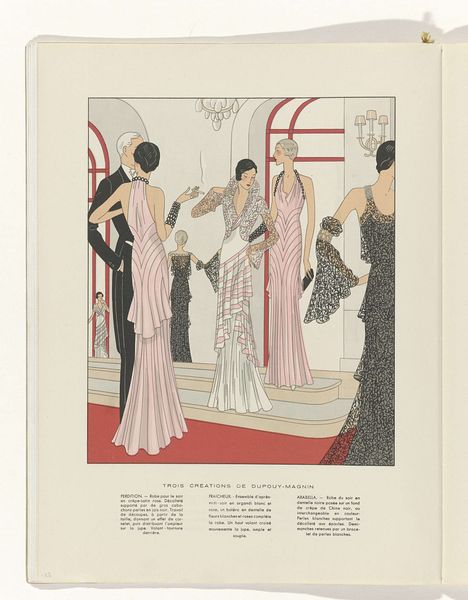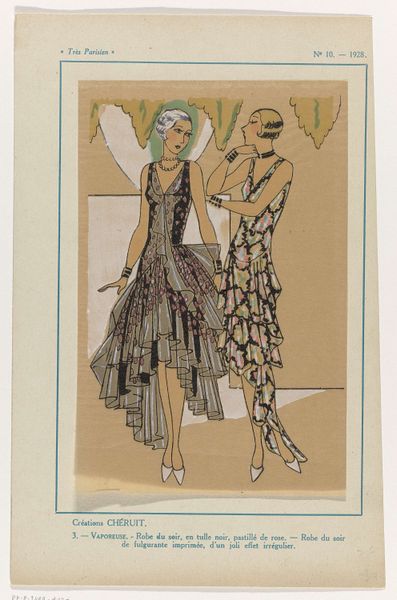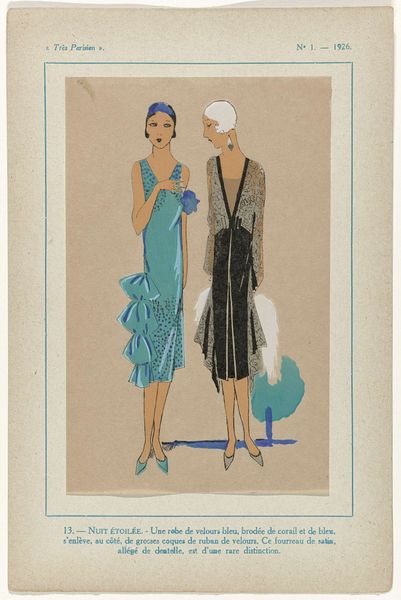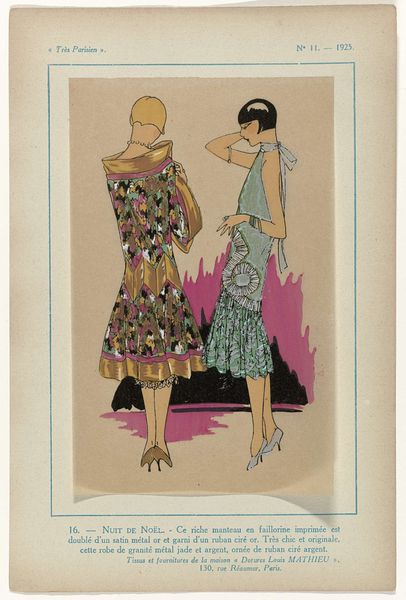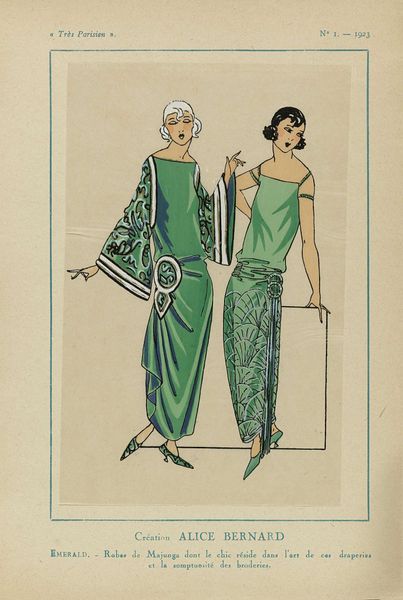
Art - Goût - Beauté, Feuillets de l' élégance féminine, Juin 1929, No. 106, 9e Année, p.25 1929
0:00
0:00
anonymous
Rijksmuseum
drawing, paper, pen
#
portrait
#
art-deco
#
drawing
#
traditional media
#
flower
#
paper
#
historical fashion
#
pen
#
watercolour illustration
#
genre-painting
#
dress
Dimensions: height 315 mm, width 240 mm
Copyright: Rijks Museum: Open Domain
Editor: This watercolour drawing, “Art - Goût - Beauté…” from 1929, is a page from a magazine of the era and feels very much of the Art Deco period. I’m drawn to the detailed lace work on the dresses. What can you tell me about the social impact of this piece? Curator: It’s fascinating to consider this as a piece of cultural ephemera. These kinds of fashion plates weren't simply about aesthetics, but also about dictating and democratizing taste. The availability of these images in magazines influenced what women aspired to, particularly within the rising middle class. Think about the role this played in constructing and reinforcing social norms surrounding femininity and elegance. Editor: So it was less about individual expression and more about conforming to a standard? Curator: In part, yes. The fashion industry and publications like this actively shaped ideals, but it’s also more nuanced. Women used fashion to negotiate their identities within these imposed structures. How does this image tie into broader discussions around women's changing roles in the 1920s? The looser silhouettes, the emphasis on movement – how does this reflect or challenge existing societal norms for women at the time? Editor: It's amazing how something as seemingly light as a fashion plate could hold so much social and historical significance. It makes you consider who held power then, and how it continues to impact the way fashion is viewed now. Curator: Exactly. By studying such "minor" art forms, we gain deeper insights into the mechanisms through which taste is manufactured and consumed.
Comments
No comments
Be the first to comment and join the conversation on the ultimate creative platform.

